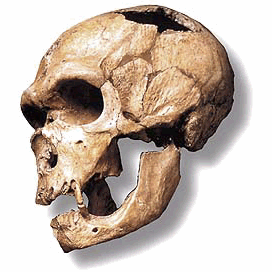
This is the terrifying Entelodont, the apex predator of Eurasia for over 21 million years, coming into existence about 37 million years ago. Standing at about 7 feet tall, the Entelodonts are related to hippos.
This replica can be found at the Denver Museum of Nature and Science located in Denver, Colorado.
Entelodont (2018) Photo taken by Laurie Luckritz
About
DENVER'S MUSEUM OF NATURE & SCIENCE (DMNS) in Colorado was one of the most exciting experiences I've had in the realm of learning new things about all kinds of topics in the sciences! With over 12 exhibits on display to date, DMNS focuses on cultivating a passion for the sciences and the earth around us. Their exhibits didn't focus as much on fossils like the MISSOURI INSTITUTE OF NATURAL SCIENCE, but instead focused on interactive learning which is great for kids and adults alike.
You'll even find a replica of Lucy, or Australopithecus afarensis, which is an Ethiopian discovery known to resemble Chimpanzees while having the bipedal traits (walking upright like humans do today).

As you can see in the picture above, the bone structures of the knees and feet are emphasized to show how there's a difference between bipedal and quadrupedal bone structures for walking.
The Wildlife Exhibit
The wildlife exhibit showed many ecosystems and climates. With life-sized taxidermy of extinct and current living animals, you can gain a perspective of what life is like away from the modern technology we have today. It was a remarkable experience to see the size of animals you don't normally interact with and learn about them.
The gallery below was photographed by Laurie Luckritz (2018)
An example of something you'll learn while looking at all the different kinds of animals is that all mammals have five fingers and toes (mammals that include bears, bat, seals, whales, and humans). The reason for the same basic bone structure is that all mammals are more closely related to each other than to another kingdom of animals such as reptiles. The concept of common ancestry and evolution work together to show us the origin of the bones we see and have!
The exhibits at the DMNS are all kid friendly and full of information for people of all ages. Whether you're looking for a place to start learning about the sciences and the world around us or are wanting to educate your children, this museum gives you a bit of everything and more.
Gems and Minerals Exhibit
The gallery below was photographed by Laurie Luckritz (2018)
The geological timescale is presented in a fun way at the DMNS through pictures of animals and genuine crystals, gems and even petrified wood. The exhibits explain the process of developments for different rocks and minerals and each exhibit keeps you entertained while showing you a world that you may not often realize is all around you.
Evolution Education
DMNS had an entire display dedicated to explaining the theory of evolution and the origins of life. From the beginning of time to the rise of different fish, reptiles and mammals, there were prime examples and good break downs of evolution that made it both fun and easy to learn. You can imagine how happy that made me.
The gallery below was photographed by Laurie Luckritz (2018)
From the Origin of Life display explaining the Big Bang to the Fish Story that explains that fish were the first animals to develop backbones, there is information about the development of everything including living cells and prehistoric life on earth! There are also computer simulations with interactive games that explain Darwin's ideas of Natural Selection and teach kids how things change over time!

Ultimately, DMNS was one of the best museums I've gotten the chance to go to and I learned a lot during the visit. Anyone who is interested in learning about life, sciences or even has a particular interest in animals ranging from bugs to dinosaurs won't be disappointed to pay DMNS a visit! To say the museum was huge would be an understatement so for anyone planning their visits, I recommend preparing to stay for at least half the day.




